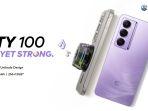CONTOH Soal TBI BUMN, Mirip Literasi Inggris UTBK, Simak Latsol Bahasa Inggris Dilengkapi Jawaban
Para peserta mempersiapkan diri demi lolos tes bahasa Inggris atau TBI ini passing grade 450. Simak contoh soal serta penjelasan dan kisi-kisi
Penulis: Ifa Nabila | Editor: Ifa Nabila
TRIBUNTERNATE.COM - Tes bahasa Inggris Rekrutmen Bersama BUMN dilaksanakan sejak Minggu, 16 Juli 2023.
Para peserta pastinya tengah mempersiapkan diri demi lolos tes bahasa Inggris atau TBI ini.
Di antaranya dengan cara berlatih menjawab contoh-contoh soal agar bisa meraih nilai di atas passing grade, yakni 450.
Baca juga: Tes Bahasa Inggris BUMN Keluar Nilai Akhlak, Minimal 450 atau 65? FHCI: Peserta Bisa Akses Nilai TBI
Baca juga: Hasil TKD BUMN di Bawah Standar Minimal Kelulusan 58 Masih Bisa Lolos? Begini Jawaban Resmi
Disinyalir, soal-soal TBI BUMN ini mirip dengan soal tes skolastik literasi bahasa Inggris dalam UTBK SNBT 2023.
Dikutip TribunTernate.com dari ruangguru.com, tes literasi bahasa Inggris UTBK SNBT berjumlah 30 soal dikerjakan dalam 45 menit memiliki kisi-kisi berikut:
- Teks personal inspiratif
- Menentukan inti bacaan
- Menyimpulkan isi bacaan
- Makna teks umum
- Makna kontekstual kata
- Tema dalam teks sastra
- Unsur eksplanatif teks popular saintek dan sosial humaniora
- Tema dalam teks sastra
- Nilai dalam teks sastra
- Unsur proses dalam bacaan eksplanatif
- Sebab-akibat bacaan eksplanatif
- Kelengkapan paparan kekhasan objek bahasan dalam bacaan ulasan
- Keakuratan paparan kelebihan dan kekurangan objek bahasan dalam bacaan ulasan
- Ketepatan opini atas objek bahasan dalam bacaan ulasan
- Gagasan pendirian yang relevan/tidak relevan dengan isi bacaan argumentatif
- Fakta atau data dan simpulan yang relevan atau tidak relevan dengan gagasan pendirian dalam bacaan argumentatif
- Inferensi meyakinkan dalam bacaan argumentatif
Simak contoh soal, dikutip dari brainacademy.id:
1. The questions number 1–3 are based on the following passage.
In the US, consumers spend around $700 million a year keeping their fabrics soft. In the UK people spend £200 million a year on fabric softener. A giant manufacturer even claims a massive 50 percent share of the market. Despite the popularity, fabric softeners can be harmful to both the people who use them and the marine life that ends up swimming in them.
Fabric softening surfactants can be derived from animals, plants or minerals, as in the case of newer, silicone-based formulations. There is little difference between the chemicals used in fabric softeners and those used in hair conditioners. Whatever they are based on, all fabric softeners work in pretty much the same way, by depositing these surfactants onto the fabric to make it feel softer, reduce static cling, and impart a fresh fragrance.
Special fixatives in the mix of both standard and luxury conditioners mean that the fragrance can last for days, permeating wardrobes and drawers. The regular off-gassing of perfume chemicals from fabric softeners can be a significant trigger for asthma and other breathing problems. In the US, chemically sensitive individuals complain that, even after several washes, they cannot get the smell of fabric softeners out of their washing machines and dryers.
If you are a fabric softener addict, there are now a number of companies that provide alternative and ‘green’ fabric softeners. However, essentially, these are unnecessary products that can trigger health problems and can interfere with the functional aspect of some textiles. For instance, when used on towels and nappies, some fabric softeners can reduce absorbency, which is why it’s generally recommended that reusable nappies aren’t washed with them. Once they are washed down the drain they can become highly toxic to aquatic life. Given this, maybe it’s worth asking yourself whether the time has come to break the fabric softener habit completely.
Thomas, P. (2009). Behind the Label: Comfort Fabric Softener. Taken on 20 September 2021 from https://theecologist.org/2009/feb/12/behind-label-comfort-fabric-softener.
What does the passage mainly talk about?
A. The downside of fabric softener usage
B. The popularity of fabric softener in the US
C. Harmful compounds found in fabric softener
D. Controlling the habit of using fabric softener
E. Environmental issues caused by fabric softener
Jawaban: A

:quality(30):format(webp):focal(0.5x0.5:0.5x0.5)/ternate/foto/bank/originals/rekrutbumnn.jpg)







:format(webp):focal(0.5x0.5:0.5x0.5)/ternate/foto/bank/originals/Peserta-BUMN-mengeluh-hasil-tes-bahasa-Inggris-yang-keluar-makah-nilai-akhlak.jpg)


:format(webp):focal(0.5x0.5:0.5x0.5)/ternate/foto/bank/originals/harga-enas-gatangan-di-Ternate.jpg)
:format(webp):focal(0.5x0.5:0.5x0.5)/ternate/foto/bank/originals/emas-antam-di-pegadaian-ternate.jpg)
:format(webp):focal(0.5x0.5:0.5x0.5)/ternate/foto/bank/originals/emas-batangan-galeri-24-ukuran-100-gram.jpg)
:format(webp):focal(0.5x0.5:0.5x0.5)/ternate/foto/bank/originals/emas-antam-dok-kompas_4.jpg)
:format(webp):focal(0.5x0.5:0.5x0.5)/ternate/foto/bank/originals/emas-batangan-antam.jpg)